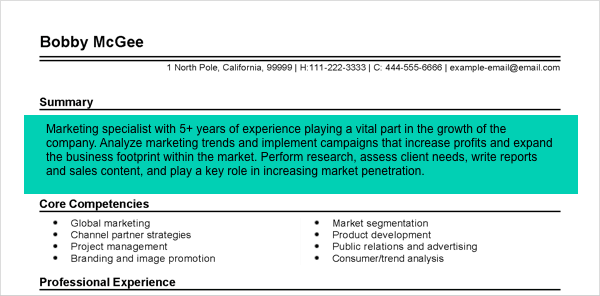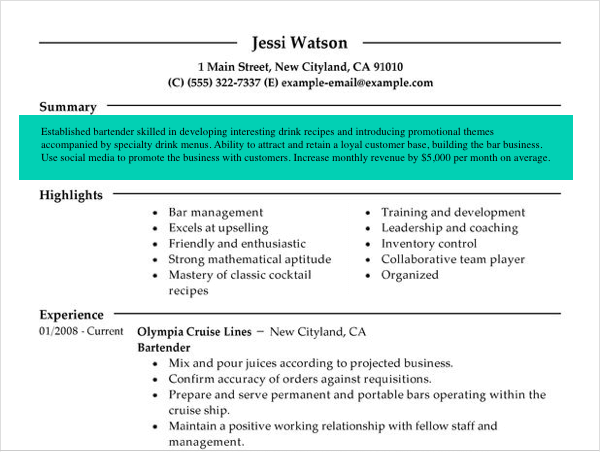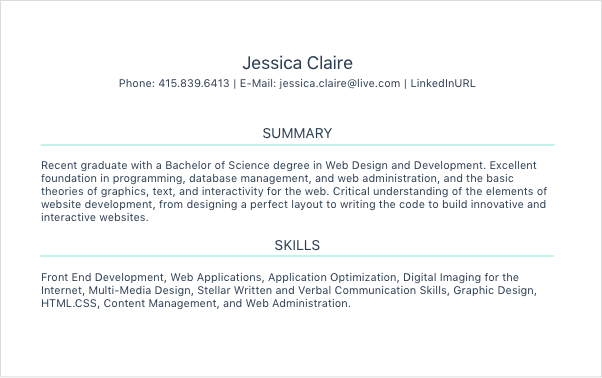
Every job seeker wants to know: What’s the secret to writing a killer resume?
Al Palumbo, MBA, Certified Professional Resume Writer and career coach, used his extensive resume-writing experience to answer 16 frequently asked questions about how to write a good resume that will grab hiring managers’ attention.
What Is the Best Resume Format?
The first thing to remember as you learn how to write a professional resume is that there are three main resume formats:
- Chronological format: The most widely accepted format among recruiters, the chronological resume emphasizes your work history, making it easy for hiring managers to track your career progression.
- Functional format: This layout works best for professionals with career gaps or switching industries because it focuses on skills and accomplishments rather than work history.
- Hybrid/combination format: This resume allows you to describe your functional skills and related qualifications, followed by your work experience. The layout works across career levels and goals by giving equal attention to skills and work history.
Which Font Works Best in a Resume?
Selecting the right font is an important design choice for your resume. Fonts give the reader impressions of your personality and style.
Your resume font should maximize readability and show professionalism. Most resumes are written in serif fonts, such as Times New Roman or Cambria, or sans-serif fonts, like Arial and Calibri, because they project reliability and authority.
It’s up to you, but whichever font you choose, be sure it’s easy to read and looks good on paper and a computer screen.
How Do I Create a Resume Header?
The top of the resume should always include:
- Your name
- Professional email address
- Phone number
Not listing your address is OK, as snail mail is no longer the preferred contact method. If your LinkedIn profile is up to date, including it is a good idea.
To further focus your resume, include the name of your target position in the top section of your resume.
How Do I Write a Strong Resume Summary?
A resume summary works as your elevator pitch. You can grab the hiring manager’s attention in no more than four sentences with a short and compelling summary of your strongest qualifications.
State your job title, relevant skills, and significant accomplishments. If you can include what you can bring to the company, add it. Here are examples of strong resume summaries for two different industries:


If you have little work experience, opt for an objective statement. This alternative focuses on your professional skills and career goals, so ensure they align with what the company is seeking.
How Do I Write a Resume With Limited Work Experience?
When learning how to write a resume with no experience, focus on showcasing transferable skills and educational experiences that prepared you for the role.
In this example, the recent graduate used their resume summary and skills section to mention relevant skills they acquired in college and theoretical knowledge they can apply in real-life work situations.

Recent graduates can also highlight soft skills applicable across industries, such as attention to detail, communication, and teamwork.
Most importantly, all experience is important, whether paid or voluntary, as long as it is relevant to the job. If you have been a volunteer in an organization and have accomplishments, learn how to write a student resume in a way that allows you to emphasize them.
How Many Years of Experience Should I Include in My Work History?
Typically, a resume should not go back more than 10 years. The older the experience, the more dated and the less meaningful it is to the employer.
Focus on only relevant experience from the last 10 years. Start with your most recent job position and work your way back. Always include:
- Job title
- Company name
- Dates of employment
Instead of listing your job duties, mention measurable accomplishments that showcase your ability to perform the role and drive positive outcomes.
Can I Add Volunteer Work on a Resume?
Yes. Experience is experience, whether it’s paid or unpaid. However, ensure it’s relevant to the role and complements the rest of your resume.
Should I Add GPA to My Resume?
There is no hard and fast rule about whether to keep or remove your GPA from your resume after college. A high GPA — 3.5 or higher — can be a good indicator of your skills and work ethic. However, you should remove your GPA a year or two after graduation.
Is a Resume Writing Service Worth It?
The reality of the job market is that employers might see dozens or even hundreds of resumes every day. In this competitive environment, your resume must stand out from the pile. Hiring a professional writer is an investment in your career that will provide that extra bit of polish above the competition.
However, a Resume Builder is a more affordable option with the same benefits. Resume Builder’s tool can help you create a recruiter-ready resume in minutes. It features:
- Professionally designed ATS-friendly templates
- Resume summary ideas tailored to your desired role
- Content suggestions for your skills and achievements
- Professional tips
- Spell-check
How Can I Improve My Chances of Passing ATS?
Many large organizations now rely on applicant tracking systems (ATS) to screen resumes. The system’s score resumes for contextual keywords and key phrases and assigns them a mathematical score for relevance. Only the highest-scoring resumes are submitted for human review.
So, learning how to write a great resume that can pass ATS scans is key to getting your resume into the right hands. Here are some tips:
- Keep the formatting simple. Avoid tables, text boxes, jpg, or other graphics. These can confuse the ATS and result in your resume being rejected.
- Use typical resume terms, such as “Qualifications,” “Professional Experience,” “Education,” and “Skills.”Unfamiliar headings can confuse an ATS.
- Include keywords lifted directly from the job post in your resume, but don’t use too many keywords. ATS software can detect keyword stuffing, so ensure it sounds natural.
- Use spell check and a second set of eyes to proofread for spelling and grammar mistakes since, once the resume passes the ATS, it will be scrutinized by the recruiter or hiring manager.
What’s the Ideal Resume Length?
While most experts insist a resume should be one page long, there is no hard, fast rule regarding resume length.
Remember that your resume is a marketing tool, not a biography. You want it to be concise, including key selling points or accomplishments. Every word in the resume should lead the employer to conclude that you will bring value to the workplace.
Here are some general suggestions:
- Use a one-page resume if you have less than 10 years of experience. This length also applies if you are making a significant career change and your work experience isn’t relevant.
- Use a two-page resume when you have more than 10 years of experience related to the job. Two-page resumes are also appropriate if your job is technical, and it is essential to list technical knowledge and skills.
- Consider a three-page or longer resume if you are a senior-level manager or executive with a long record of leadership accomplishments.
Do I Still Need a Resume if I Have a LinkedIn Profile?
Yes! While it is true that some employers will let you apply for a job online with your LinkedIn profile, it’s not a substitute for a formal resume.
Your LinkedIn profile gives you an online presence and promotes your brand. On the other hand, a strong resume is the primary door opener to an interview, especially now that employers rely more on ATSs.
Should I Include References on My Resume?
If a job posting doesn’t request references, do not list these on your resume. Including references or writing “References submitted on request” at the bottom of your resume was the norm 30 years ago, but not today.
Instead, have three pre-approved references ready in a separate document for when an employer requests references.
What Is the Best Resume File Format?
I always recommend submitting your resume in PDF or MS Word .doc format. However, a PDF file ensures your formatting and text remains unchanged.
Does Every Resume Need a Cover Letter?
While some employers may not require one, writing a compelling cover letter can be just what you need to secure a job interview.
Your cover letter is an excellent opportunity to start a conversation with the hiring manager. It’s not just about “translating” your resume into paragraph form; it’s about telling your would-be employer a story to help them understand why they will benefit from hiring you.
When written correctly, cover letters can strengthen your candidacy among other applicants, increasing your chances of landing an interview. They also help demonstrate your communication skills and professional demeanor without being there, establish yourself as an authority in your field, and create strong first impressions.
Is There a Tool That Can Check My Resume?
A well-written resume often distinguishes between getting a phone screen and not.
We understand the need, so we have partnered with MyPerfectResume to bring you an award-winning resume-checking tool. The powerful text-tuned resume checker can ensure you arrive with an error-free, polished resume in minutes.
Using the resume checker will help you with the following:
- Writing analysis: Have you done your best to sell your skills and accomplishments?
- Grammar: Have you followed grammatical rules and syntax best practices?
- Verb usage: Have you used the strongest, most action-oriented language to describe your big wins?
- Font optimization: Have you made it easy to skim your resume?
- Content organization: Have you made moving from one section of your resume to another easy?
- Length: Have you included the right amount of information based on your experience?
- Spelling: Have you accidentally included a spelling error that could throw your resume out?
Get started checking your resume now!
